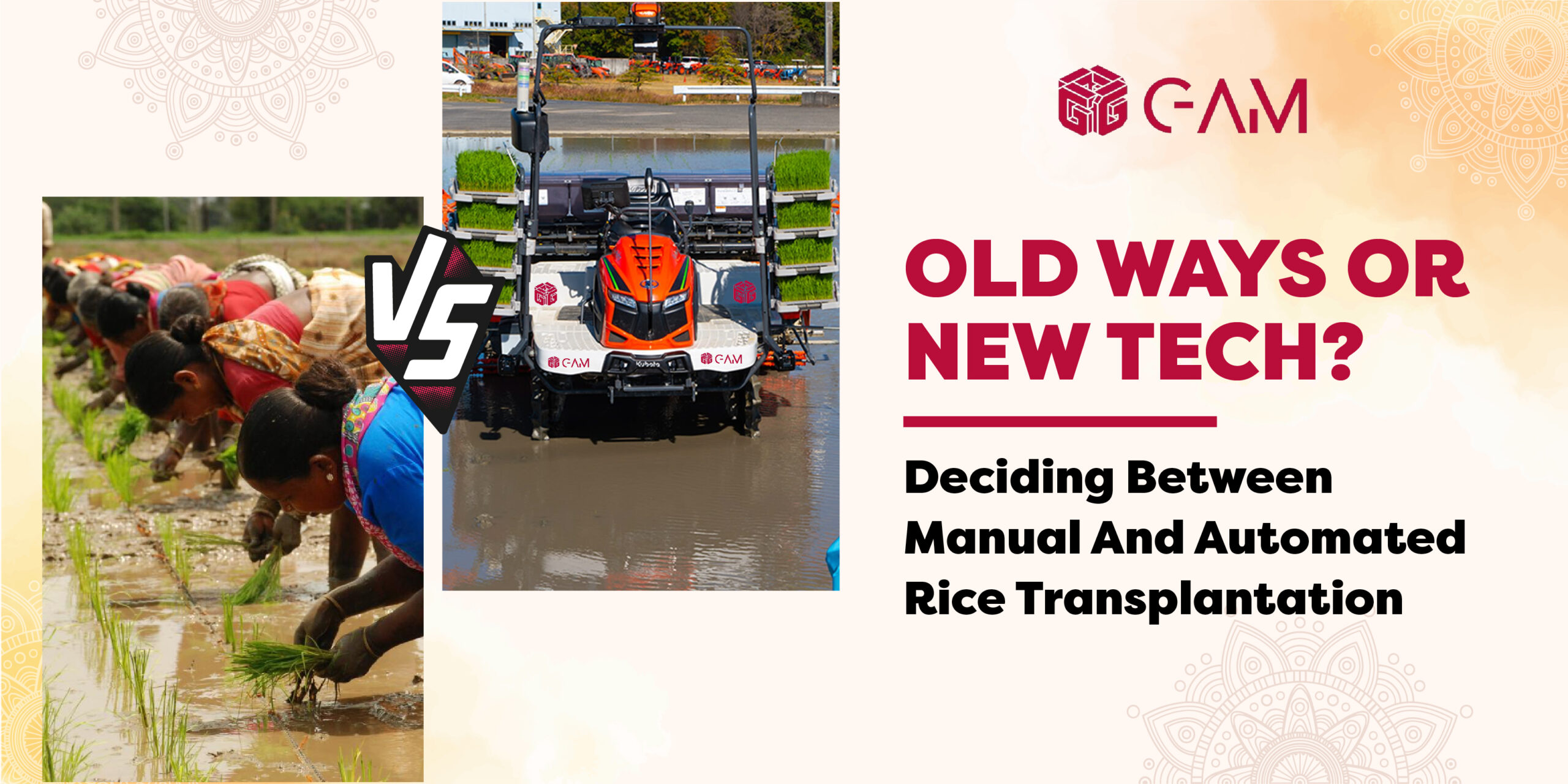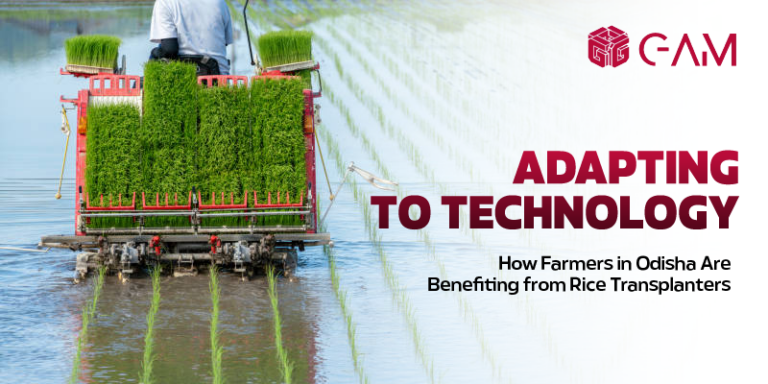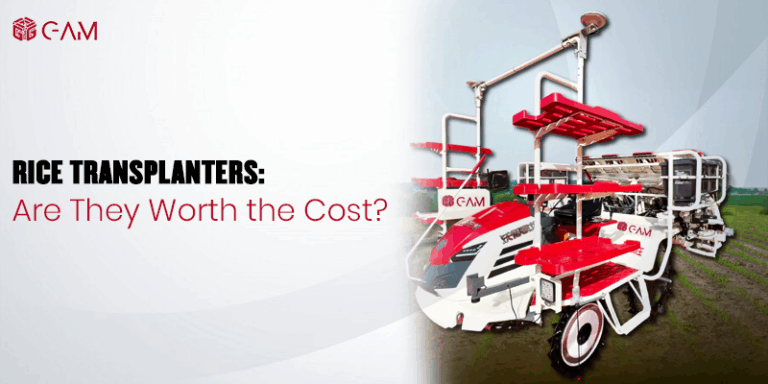The success or failure of rice cultivation depends on the transplantation process. For a long time, farmers relied on the labor-intensive and time-consuming process of hand transplantation. However, thanks to technological developments in farming, there is an effective alternative: rice transplanting machines.
These machines provide many benefits compared to more labor-intensive hand transplanting methods. By learning about the benefits of a rice transplanter Odisha compared to manual methods, farmers will be able to make a well-informed choice.
Manual Transplanting
Manual transplanting rice seedlings is a labor-intensive task. This is done by trained workers who meticulously plant seedlings at set times while keeping the correct space between them. It works best in places with a surplus of workers or small rice fields, as it does not require expensive machinery. Some basic requirements for manual rice transplantation include:
- Healthy Rice Seedlings
- Field Preparation
- Management Of Water Resources
- Transplantation Tools
- Sufficient labor
- Proper Fertilizer Application
- Familiarity with Weed Control
- Adequate Care Following a Transplant
Despite being used for decades, manual transplanting has certain drawbacks:
1. Physically demanding
A great deal of expert handiwork is needed for manual transplantation. Depending on physical labor can be difficult at any time, but it becomes more problematic during busy seasons when there may not be enough workers to go around.
2. Time-Requiring
Transferring seedlings by hand takes a lot of time. Transplanting seedlings one by one requires stooping down, which adds time to the operation. As a result, farming operations can become less efficient and take longer to complete.
3. Uneven Space Between Plants
Manual transplanting makes it difficult to achieve uniform plant spacing. Because of uneven growth, inconsistent spacing makes it harder for farmers to control the crop and maximize their resources.
By getting a rice transplanter Andhra, farmers can avoid all these problems.
Rice Transplanting Machines
Rice transplanting machines are modern farming tools that automate the process of transplanting. Machine transplantation is much more efficient in time and effort than manual transplantation. The benefits of using these machines are as follows:
1. Enhanced Productivity
Using a rice transplanter machine makes the process much more efficient. The automated planting systems, seedling trays, and conveyor belts allow these machines to transplant seedlings more quickly and efficiently than humans can, allowing them to cover more ground in less time.
2. Accurate Planting
Machines designed for transplanting rice plants guarantee precise planting with equal spacing. The uniform spacing helps:
- Improve plant health,
- Increase agricultural yields
- Optimize resource management
3. Efficiency In Work
Rice transplanter machines lower the need for human labor. These automated machines have the potential to reduce labor costs by replacing a large number of workers. Farmers have more time and energy to focus on other aspects of farming, like harvesting, pest management, and crop monitoring.
4. Flexibility And Personalization
Farmers can tailor their rice transplanter equipment to their own needs. Farmers can change parameters like planting depth, spacing, and patterns to suit their requirements and the field’s condition. The machines can easily adjust to diverse terrains and work well in fields with both flat and rising terrains.
Choosing The Right One: Factors To Consider
When deciding between manual transplantation and rice transplanting machines, farmers should think about the following:
1. Cost
A cost analysis must be done to determine how much money each approach will cost. Consider factors like:
- Labor expenditures
- Expense of machinery
- Operating costs for repairs
- Future ROI
Although buying a rice transplanter Odisha will require huge capital, it can provide long-term benefits through labor savings and enhanced productivity.
2. Access To Labor
The accessibility and dependability of physical labor must be considered. Investing in rice transplanter machines might be more practical if there is a labor shortage or high worker costs. On the other hand, manual transplanting could be an ideal option in areas with a surplus of inexpensive labor.
3. Level Of Operation
The size of agricultural operations is crucial when determining the best method. Rice transplanter machines can simplify processes, increase efficiency, and cut expenses, which is especially helpful for small-scale farmers with limited labor resources. Manual transplanting could be a viable economic option for large-scale farmers with access to a large enough labor force.
4. The Condition Of The Field
It is essential to think about things like soil type, terrain, and field size. Transplanting machines can adapt to different surfaces, including fields with significant slopes or other irregularities. While machine transplantation is preferable in most cases, manual transplantation could be necessary in fields with unusual shapes that make machine operations impractical.
5. Training and Assistance Services
Before purchasing a rice transplanter, make sure you can get some training and technical assistance. Proper training is essential for farmers to use and detect problems with these machinery. Having access to technical support and spare parts is also essential to keeping downtime to a minimum and maximizing machine efficiency.
Summing Up
Compared to manual transplantation, using a rice transplanter machine significantly improves efficiency and productivity. Using automated technology, a rice transplanter Odisha can cover more ground in less time when transplanting seedlings. The streamlined process speeds up transplantation, freeing farmers’ time to attend to other critical farm duties and boost overall production.
When it comes to transplanting rice, Godabari Agro has you covered with rice transplanters packed with features that boost efficiency and output. Visit our website to buy modern, reliable, and easy-to-use rice transplanters.




